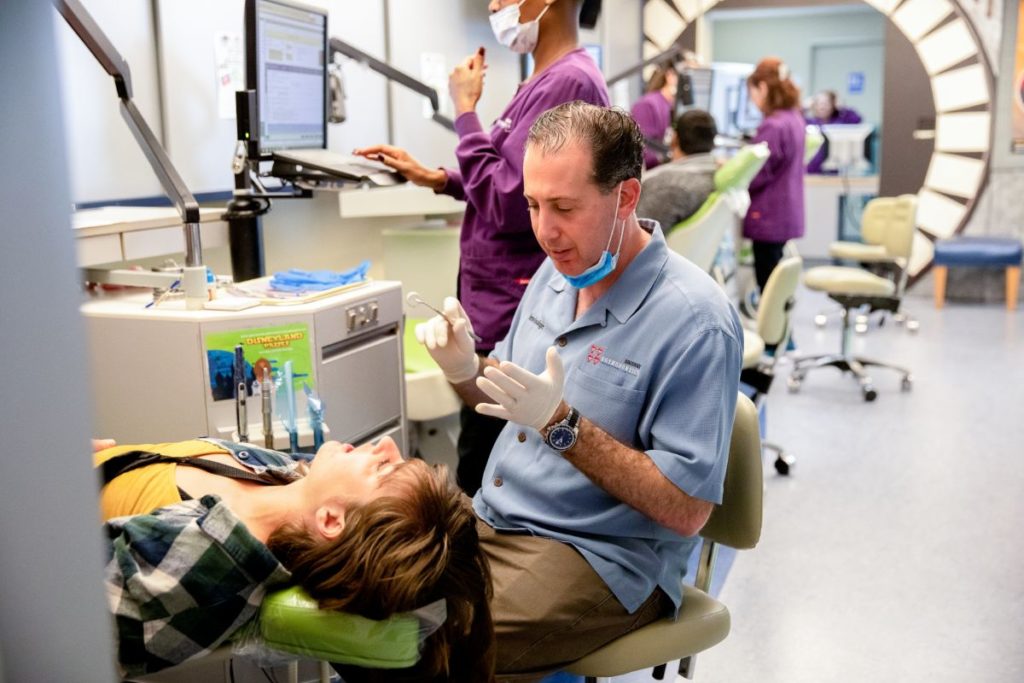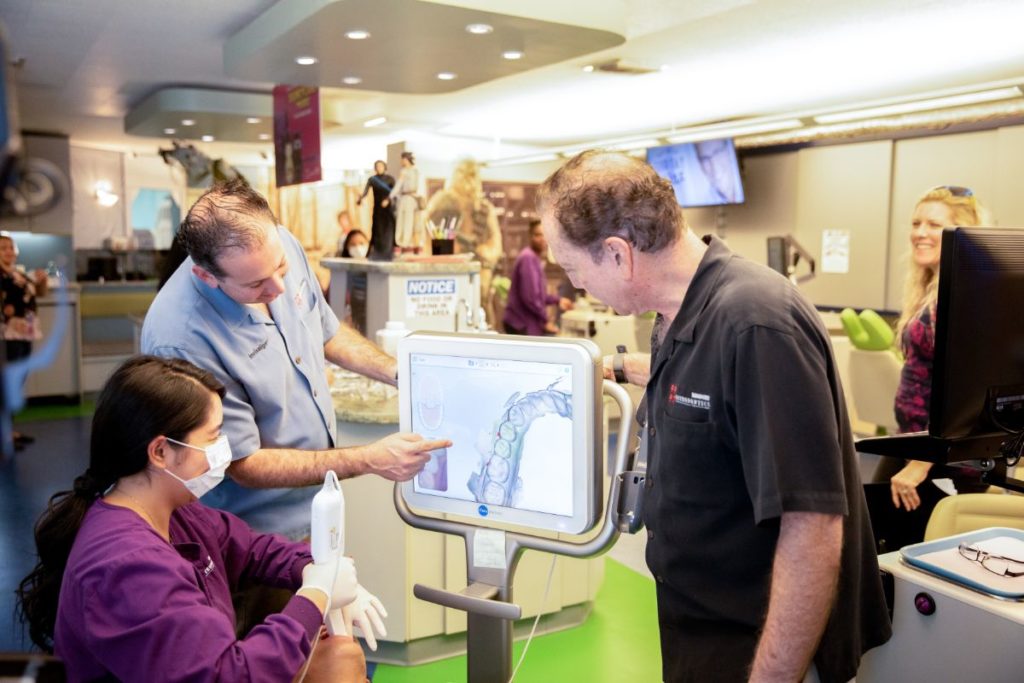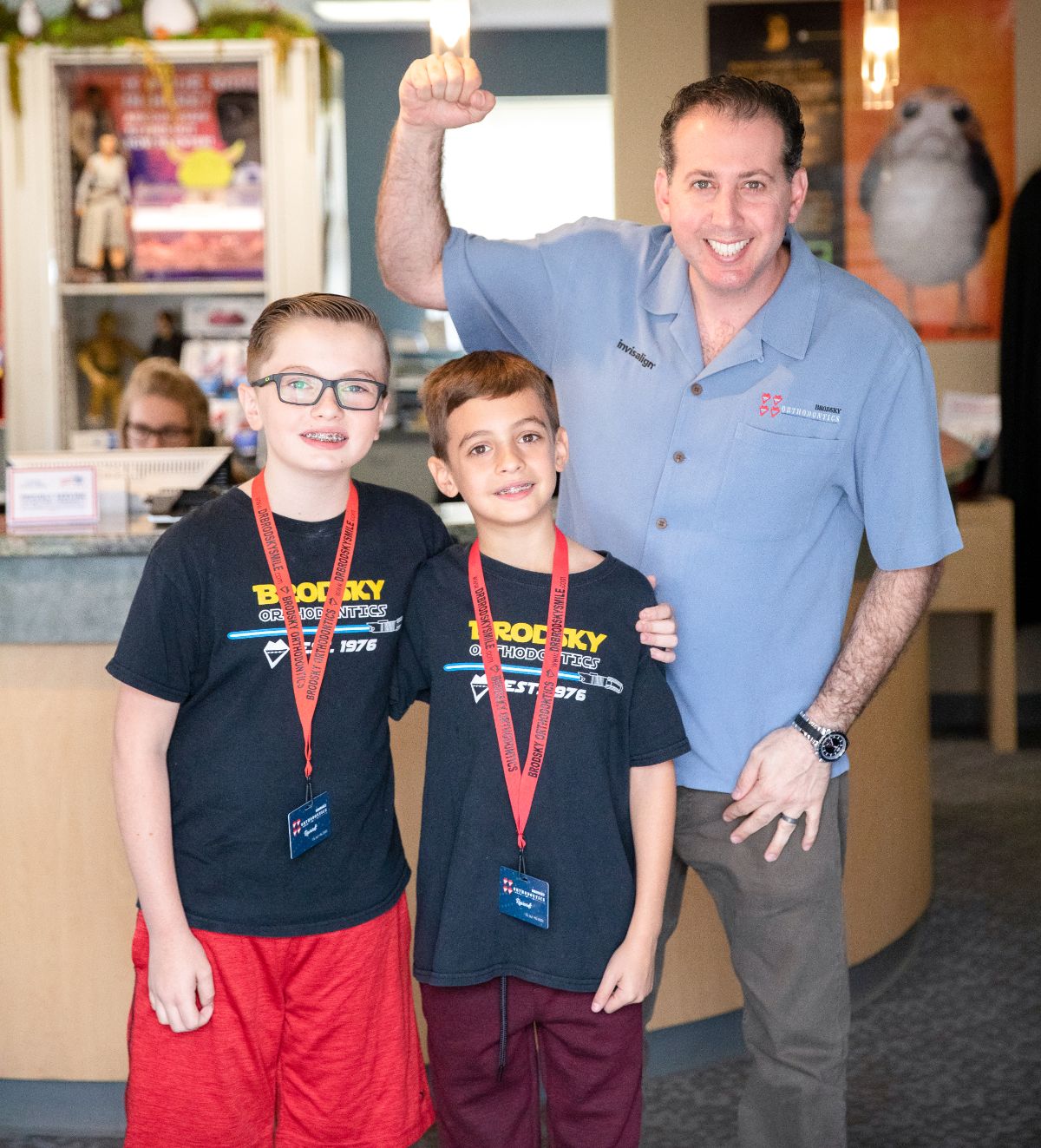Advancements in orthodontic technology and technique have made it easier than ever to straighten your teeth and align your jaw. Orthodontists around the world are now able to offer multiple treatment options to help you achieve the smile you want!
As with any treatment, it’s important to work with a qualified provider who has the experience, skills, and knowledge to best meet your specific needs. If you’re not sure where to begin when it comes to finding the right orthodontist for you, you’re not alone!
Keep reading below to learn more about what you should ask before making an informed decision on your orthodontic care.
What is an orthodontist?
Here at Brodsky Orthodontics, we believe in always starting with the basics. So, what is an orthodontist? Just as there are specialists in general medicine, there are also specialists in dentistry. Orthodontists fall under this classification, and focus almost exclusively on diagnosing, preventing, and correcting misaligned teeth and jaws.
Once they’ve graduated from dental school, an orthodontist must complete a minimum of two years of study in an orthodontic residency program that’s been accredited by the American Dental Association. These programs tend to be extremely competitive, and will generally accept only the top students in any dental school graduating class. They include intensive full-time training that focuses on correcting orthodontic issues safely and effectively. By the time an orthodontist completes this residency, they will have:
- studied the growth and maturation of the teeth and jaw
- been introduced to numerous case studies
- developed diagnostic skills
- learned biomechanical techniques to properly move teeth
- studied how to change the development of the dental alveolar complex and facial growth of younger patients
Meet our accomplished doctors
Dr. Joel Brodsky has created over 25,000 smiles since 1976! After receiving his Doctorate of Dental Surgery degree from UCLA, he headed across the country to study orthodontics at the Eastman Dental Center – University of Rochester. After earning his certificate in orthodontics and Master of Science degree, he returned to Lakewood to open his practice. Dr. Brodsky has held an academic appointment at the UCLA School of Dentistry and lectured at dental schools and meetings across the country. He is also associated with the cleft palate teams at Long Beach Memorial Hospital, Orthopedic Hospital Los Angeles, and Southern California Kaiser Permanente.
Dr. Charles Brodsky attended the University of the Pacific in Stockton for his Bachelor’s degree in applied sciences. He then earned his Doctorate of Dental Surgery from UOP Dental School before moving to Massachusetts, where he completed his residency in orthodontics at Boston University School of Dental Medicine. Dr. Brodsky received a specialty certificate in orthodontics and a Master of Science in Dentistry degree in 2005. He has received extensive training and certification in Invisalign®, tissue management with lasers, as well as the placement and utilization of orthodontic mini-screw implants (TADs).
Dr. Jeffrey Brumbaugh earned his Bachelor’s degree in Biochemistry from UCLA in 2011. After graduating with college honors, he moved south on campus to the UCLA School of Dentistry, where he was recognized for his excellent clinical skills on more than one occasion, including an induction into Omicron Kappa Upsilon, the national dental honor society. He graduated at the top of his class and earned his DDS degree with honors before moving down the hall to receive his certificate in orthodontics and Master’s degree in Oral Biology from UCLA as well.
As you can see, that’s a lot of hard work, extra education, and additional training! It’s no wonder less than 10% of dentists are also orthodontists.

What treatment options does the orthodontist offer?
Modern braces are more comfortable, efficient, and aesthetically pleasing. Improvements in both technology and technique allow us to offer the following treatment options at Brodsky Orthodontics.
Miniature Metal Braces
Traditional metal braces have been used for many decades, but they’ve really upped their game in recent years. Miniature metal braces use high-grade stainless steel brackets that are small in width and depth. These brackets are bonded to the front of each tooth and connected by a wire. As the wire is changed throughout the course of treatment, the braces will slowly reposition your teeth into the proper alignment. Metal braces come with the added benefit of multicolored bands, which allow you to have a customized and colorful smile!
Lingual Braces
Lingual braces are similar to traditional braces in several ways. For instance, both have brackets attached to the surface of the teeth, and both use wires and rubber bands to slowly move them into more desirable positions. However, the brackets used with lingual braces are placed on the back sides of the teeth facing the tongue, rather than the front of the teeth. We use the Inbrace style of lingual braces here at Brodsky Orthodontics. It uses just a few robotically bent wires behind the teeth to create a beautiful custom smile, so there are no visible braces.
Clear Ceramic Braces
Ceramic braces realign teeth using brackets attached directly to the front of the teeth, just like metal braces. However, instead of stainless steel, the brackets are made of a clear ceramic material that matches the color of the natural teeth. This gives patients a much more subtle treatment option for straightening their teeth! The ceramic material does make the brackets a bit more susceptible to damage, so we tend to recommend these braces for our older teen and adult patients.
Clear Aligners with Invisalign®
Invisalign clear aligners are the most advanced form of tooth alignment, providing you with an effective, comfortable, and less noticeable method of straightening. Dr. Brodsky first digitally designs a customized treatment program for you using Invisalign’s software. The aligners which the doctor fabricates, sit on top of your teeth and are worn 22 hours per day. These trays are switched out for the next set in the series every one to two weeks. For teens and adults looking for a flexible way to straighten their teeth in a shorter period of time, Invisalign can be an excellent option!
How often are follow-up visits with the orthodontist?
Whatever treatment option you decide on, you can expect regular follow-up visits throughout the treatment process. We normally schedule these for every 8-12 weeks or so, depending on whether you have braces or aligners. Since you’ll be seeing your orthodontist regularly over this period of time, it’s extra important to choose a practice that you feel comfortable with!
During these visits, one of our doctors will check the movement of your teeth, make adjustments as needed, and replace any worn-out rubber bands if you’re wearing braces. These appointments are an essential part of your orthodontic journey, so you should always do your best to keep them. Failure to do so can lengthen the total treatment time. This is where our model of treatment differs from other direct to consumer modes of treatment like SmileDirectClub. Our doctors are always available to make sure that problems do not occur and this allows us to achieve an ideal result for each and every patient.

Brodsky Orthodontics could be the right fit for you!
Choosing an orthodontist is a personal decision, and there are many choices available to you. That’s one reason why we work so hard to stand out from the crowd! At Brodsky Orthodontics, we have a focus on continuity of care, customized treatment plans, and world-class service. Our talented team has what it takes to provide our patients with the best care and superior results!
If you’re in Lakewood or the surrounding Long Beach communities and are looking for an orthodontist to help you achieve a beautifully aligned smile, get in touch today! We’d love to schedule you for a FREE consultation with one of our incredible orthodontists.
